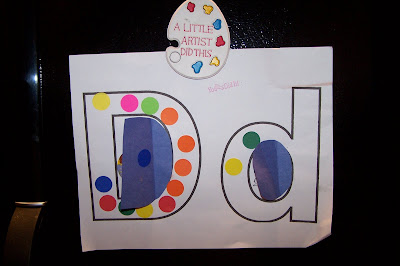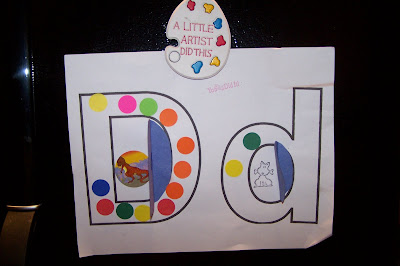
Almost all children love dinosaurs at some point. There are lots of fun things you can to for a dinosaur themed learning week. Here are some ideas:
GROSS MOTOR SKILLS
Pretend to be dinosaurs and stomp around the house. You can give your child a dinosaur name based on name (so Brayden is "Braydensaurus") and have him choose a type of dinosaur to be (flying, swimming, land...).
FINE MOTOR SKILLS
Be paleontologists!
- Put a toy, plastic dinosaur in some water and freeze it. The next day, work on extracting your dinosaur from the ice.
- Extract bones from the dirt. Put some bones in a baking dish. Cover them with sugar, flour, sawdust, etc. Use paintbrushes to find the bones. You could make some bones out of plaster (you can use a plastic dinosaur to make a plaster of footprints), use sticks or rocks (or whatever) along with the imagination of your child, or purchase a kit like the Scientific Explorer's My First Dinosaur Science Kit. Use a paintbrush to extract the dinosaur bones.
SINGING SONGS
To the tune of "I'm A Little Teapot" (add actions if you want to)
I'm a mean old dinosaur
Big and tall
Here is my tail and here is my claw
When I get all hungry
I just growl
Look out kids I'm on the prowl!
COLOR OF THE WEEK
You really could use any color since we don't know exactly what colors dinosaurs were, but common colors applied to dinosaurs are green, brown, and yellow.
SCIENCE
You could use your fine motor skills to apply to science. You can also get a Giant Dinosaur Hatch'em set. My sister gave one of these to Brayden when he was one, and I just hadn't ever used it yet. When we had dinosaur week last week, I got it out and we watched the egg hatch over a day and the dinosaur grow over a day.
GEOGRAPHY
Show your child a map of where dinosaur bones are primarily found.
ART
- Dinosaur coloring pages
- Playdoh: Have your child make a footprint using a toy dinosaur. Let the footprint harden to make a fossil.
LETTER OF THE WEEK
Have your letter of the week be the letter "D." See Letter Picture: D for an idea for a fun activity.
BOOKS
Go to the library and check out books about dinosaurs. If your child really loves dinosaurs, you might decide to buy one to keep around the house: Dinosaur Books. Some I like:
Take a trip to a dinosaur museum.
FUN/FREE PLAY
Get some Dinosaur Figurines and play with them. We own several, and my 4 and 2 year old had a lot of fun with each other playing with the dinosaurs. There was something about it being "dinosaur week" that made playing with them extra fun.
and play with them. We own several, and my 4 and 2 year old had a lot of fun with each other playing with the dinosaurs. There was something about it being "dinosaur week" that made playing with them extra fun.
SORTING
You can use your figurines to have your child sort. He can sort them by colors, by his favorite to least favorite, by smallest to biggest, etc.
COMPUTER TIME
pbskids.org has some great dinosaur activities on the Dinosaur Train page: Dinosaur Train
TV TIME
- Watch movies with dinosaurs (like The Land Before Time)
- Watch the new show, Dinosaur Train, on your local PBS station
OTHER RESOURCES
- PBS Teachers
- Gayle's Preschool Rainbow (I didn't get my ideas from this site, but some do overlap)
- Child's Play























